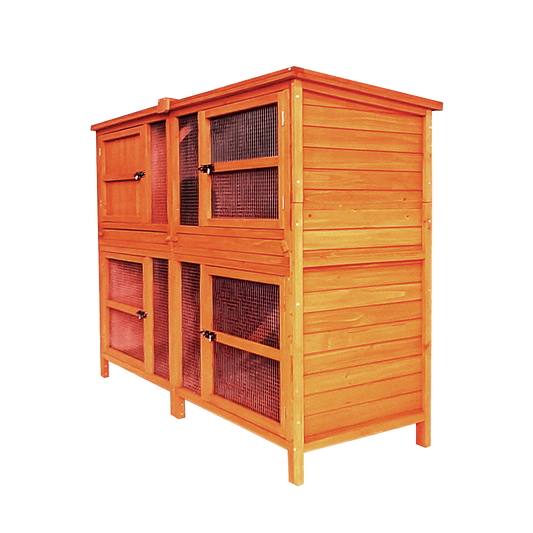In his article 'Reading Pet Food Labels' David owner of 'AllAboutDogFood' shared his insight on how to identify good and bad pet food. Due to its popularity, he has followed it up with another insightful article on the common tricks some pet food manufactures use when labelling their products.
Every producer wants you to think that their products are the best and many lower-end manufacturers have worked long and hard to find ways within the law to make their foods appear better than they really are.
The last article provided some simple tips for separating the wheat from the chaff by looking only at the ingredients list and highlighted the importance of ingredient list clarity and the order of ingredients. The trouble is, many producers of lower grade foods are very aware of what savvy consumers like us are looking for and they have found plenty of ways to put a more positive spin on their substandard ingredients lists.
An example
Let’s look at the following, fairly typical dry dog food ingredient list:
Ingredient list from the manufacturer:
Trout & Salmon 50% (22% Fresh Trout, 10% Salmon Meal, 10% Fresh Salmon, 4% Salmon Oil, 4% Salmon Stock), Sweet potato 12%, Potato 12%, Peas 11%, Potato flour 8%, Beet Pulp 4%, Pea protein 3%, Minerals & Vitamins.
Looks great right? Ingredients are clear and individually listed? Check! First ingredient is meat? Check! 50% meat is excellent and sweet potato is a decent carb source. What’s not to like?
Well, it may surprise you that if you were to buy the above food, what your dog would actually eat would be quite different:
What your dog would actually be eating:
Potato 27%, Sweet Potato 16%, Peas 15%, Salmon Meal 14.5%, Fresh Trout 8.5%, Beet Pulp 5.5%, Salmon Oil 5%, Pea protein 4%, Fresh Salmon 4%, <1% Salmon Stock, Minerals & Vitamins.
What we’re seeing here is an excellent example of ingredient list spin. By implementing some fairly simple tricks, manufacturers can take a fairly run-of-the-mill formula and make it look much more appealing to the untrained eye.To make sure you’re not being led down the garden path, look out for these tricks of the trade whenever comparing pet food ingredient lists:
Trick 1: Ingredient splitting
By separating less appealing ingredients into two or more sub entries, producers can push them down the ingredients list making them appear a lot less significant than they are. This is called ingredient splitting and it is most commonly done with grains and legumes like peas and lentils.
In the above example ingredient list, the manufacturer has cleverly split both the potato and pea ingredients into two separate listings each (potato & potato flour and peas & pea protein respectively). Without splitting, potato would most likely come above sweet potato in the list, and so might peas.
Trick 2: Ingredient grouping
The opposite of splitting ingredients to move them down the list is grouping similar ingredients together, usually within a bracket, so that the total percentage is large enough to move them up the ingredients list so that they appear more prominent. Manufacturers love doing this with their meat ingredients and sometimes rope in other animal derived ingredients like oils and stock to make their meat content appear as high as possible.
Again looking at the above example, the manufacturer has grouped all of the fish ingredients together including the fish oil and fish broth, to make them the first ingredient and provide the highly desirable ’50% fish’ headline. Listed individually, the fish ingredients would most likely all come below both sweet potato and potato and many would come even further down the list.
Trick 3: Fresh meat ingredients in dry dog foods
Ok, there are plenty of good reasons for using fresh meat in dog food - not least it’s nutritional quality, but it also makes it easy for manufacturers to claim far higher meat percentages than their foods actually contain. By law, pet food ingredients need to be listed in order of their percentages in the so-called ‘mixing bowl’ stage - that is when all of the ingredients are put together ready for the final manufacturing process. This includes both ‘fresh’ ingredients (that still contain large amounts of water) and dry ingredients (typically powders that have very low moisture levels). The problem is, when the ingredients are processed to make final biscuit, almost all of the moisture from the fresh ingredients is lost making their proportion in the food shrink considerably. In the above example, the food lists 22% fresh trout and 10% fresh salmon - a total of 32% fresh fish. But fresh fish contains roughly three quarters water and once most of it has been cooked away during processing, the proportion will be more like 13% in the finished biscuit. The ‘salmon stock’, which is almost entirely water, is reduced to nearly 0% in the finished product. This means that the total fish ingredient percentage in the biscuit is more like 27% - roughly half of the 50% advertised.
How common are these tricks?
Really common! Next time you’re in a pet shop, pick up just about any premium dog food and chances are you’ll find one or more of the above strategies being used. Look for the telltale signs:
- Numerous very similar grain or legume ingredients scattered around the ingredients list
- Grouped meat ingredients
- A large proportion of fresh meat (dry foods only)
None of these necessarily make the food bad but they do mean that the food probably isn’t quite as good as you first thought.
Let us do the maths
As you can see from our example, even when all of a pet food’s ingredients are individually listed and their percentages are provided (which is rare enough), working out a food’s true quality is far from easy. But this is where AllAboutDogFood.co.uk can help. Our unique nutritional rating system sees straight through all of the smoke and mirrors to calculate the true proportions of ingredients found in a food and score its nutritional quality accordingly.
Now that you know the ins and outs of pet food labels, click here to check out our range of Dog Food.
If you enjoyed this article, have a look at:
What's The Healthiest Food For My Dog?
What's All The Fuss About Cold Pressed?









